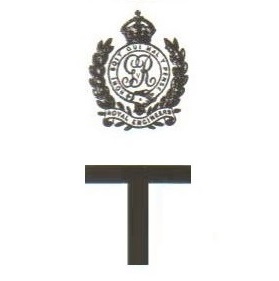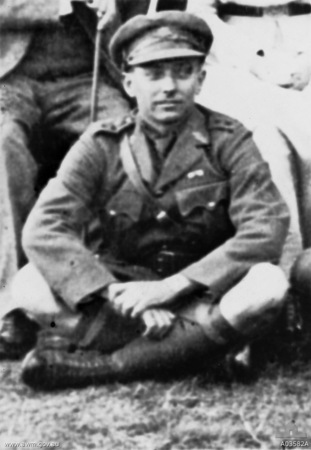
The Capture of Hill 60 took place near Hill 60 south of Ypres on the Western Front, during the First World War. Hill 60 had been captured by the German 30th Division on 11 November 1914, during the First Battle of Ypres. Initial French preparations to raid the hill were continued by the British 28th Division, which took over the line in February 1915 and then by the 5th Division. The plan was expanded into an ambitious attempt to capture the hill, despite advice that Hill 60 could not be held unless the nearby Caterpillar ridge was also occupied. It was found that Hill 60 was the only place in the area not waterlogged and a French 3 ft × 2 ft mine gallery was extended.
The Ypres Salient, around Ypres, in Belgium, was the scene of several battles and a major part of the Western Front during World War I.

Royal Engineer tunnelling companies were specialist units of the Corps of Royal Engineers within the British Army formed to dig attacking tunnels under enemy lines during the First World War.

Oliver Holmes Woodward, was an Australian metallurgist, mine manager, and soldier noted for his tunnelling activities at the Ypres Salient during the First World War.

The Mines in the Battle of Messines comprised a series of underground explosive charges which were fired during the First World War at the start of the Battle of Messines (7–14 June 1917) by the British Second Army near the village of Mesen in Belgian West Flanders. The mines, secretly planted and maintained by British tunnelling units beneath the forward position of the German 4th Army, killed approximately 10,000 German soldiers and created 19 large craters. Their joint explosion ranks among the largest non-nuclear explosions of all time.
Sint-Elooi is a small village, about 5 km (3.1 mi) south of Ypres in the Flemish province of West Flanders in Belgium. The former municipality is now part of Ypres. Though Sint-Elooi is the Dutch and only official name, the village's French name, St. Eloi, is most commonly used in English due to its role in World War I. The village and the nearby locations of Voormezele and Hollebeke were merged into Zillebeke in 1970 and into Ypres in 1976.

The 177th Tunnelling Company was one of the tunnelling companies of the Royal Engineers created by the British Army during World War I. The tunnelling units were occupied in offensive and defensive mining involving the placing and maintaining of mines under enemy lines, as well as other underground work such as the construction of deep dugouts for troop accommodation, the digging of subways, saps, cable trenches and underground chambers for signals and medical services.

The 175th Tunnelling Company was one of the tunnelling companies of the Royal Engineers created by the British Army during World War I. The tunnelling units were occupied in offensive and defensive mining involving the placing and maintaining of mines under enemy lines, as well as other underground work such as the construction of deep dugouts for troop accommodation, the digging of subways, saps, cable trenches and underground chambers for signals and medical services.

In World War I, the area around Hooge on Bellewaerde Ridge, about 2.5 mi (4 km) east of Ypres in Flanders in Belgium, was one of the easternmost sectors of the Ypres Salient and was the site of much fighting between German and Allied forces.

The 171st Tunnelling Company was one of the tunnelling companies of the Royal Engineers created by the British Army during World War I. The tunnelling units were occupied in offensive and defensive mining involving the placing and maintaining of mines under enemy lines, as well as other underground work such as the construction of deep dugouts for troop accommodation, the digging of subways, saps, cable trenches and underground chambers for signals and medical services.

The 250th Tunnelling Company was one of the tunnelling companies of the Royal Engineers created by the British Army during World War I. The tunnelling units were occupied in offensive and defensive mining involving the placing and maintaining of mines under enemy lines, as well as other underground work such as the construction of deep dugouts for troop accommodation, the digging of subways, saps, cable trenches and underground chambers for signals and medical services.

The 173rd Tunnelling Company was one of the tunnelling companies of the Royal Engineers created by the British Army during World War I. The tunnelling units were occupied in offensive and defensive mining involving the placing and maintaining of mines under enemy lines, as well as other underground work such as the construction of deep dugouts for troop accommodation, the digging of subways, saps, cable trenches and underground chambers for signals and medical services. On 17 April 1915, 173rd Tunnelling Company became the first Royal Engineer tunnelling company to fire mines beneath enemy lines.

The 183rd Tunnelling Company was one of the tunnelling companies of the Royal Engineers created by the British Army during World War I. The tunnelling units were occupied in offensive and defensive mining involving the placing and maintaining of mines under enemy lines, as well as other underground work such as the construction of deep dugouts for troop accommodation, the digging of subways, saps, cable trenches and underground chambers for signals and medical services.

The 3rd Canadian Tunnelling Company was one of the tunnelling companies of the Canadian Military Engineers during World War I. The tunnelling units were occupied in offensive and defensive mining involving the placing and maintaining of mines under enemy lines, as well as other underground work such as the construction of deep dugouts for troop accommodation, the digging of subways, saps, cable trenches and underground chambers for signals and medical services.

The 2nd Canadian Tunnelling Company was one of the tunnelling companies of the Canadian Military Engineers during World War I. The tunnelling units were occupied in offensive and defensive mining involving the placing and maintaining of mines under enemy lines, as well as other underground work such as the construction of deep dugouts for troop accommodation, the digging of subways, saps, cable trenches and underground chambers for signals and medical services.

The 1st Canadian Tunnelling Company was one of the tunnelling companies of the Canadian Military Engineers during World War I. The tunnelling units were occupied in offensive and defensive mining involving the placing and maintaining of mines under enemy lines, as well as other underground work such as the construction of deep dugouts for troop accommodation, the digging of subways, saps, cable trenches and underground chambers for signals and medical services.

The 2nd Australian Tunnelling Company was one of the tunnelling companies of the Royal Australian Engineers during World War I. The tunnelling units were occupied in offensive and defensive mining involving the placing and maintaining of mines under enemy lines, as well as other underground work such as the construction of deep dugouts for troop accommodation, the digging of subways, saps, cable trenches and underground chambers for signals and medical services.

The 1st Australian Tunnelling Company was one of the tunnelling companies of the Royal Australian Engineers during World War I. The tunnelling units were occupied in offensive and defensive mining involving the placing and maintaining of mines under enemy lines, as well as other underground work such as the construction of deep dugouts for troop accommodation, the digging of subways, saps, cable trenches, and underground chambers for signals and medical services.

Hill 60 is a World War I battlefield memorial site and park in the Zwarteleen area of Zillebeke south of Ypres, Belgium. It is located about 4.6 kilometres (2.9 mi) from the centre of Ypres and directly on the railway line to Comines. Before the First World War the hill was known locally as Côte des Amants. The site comprises two areas of raised land separated by the railway line; the northern area was known by soldiers as Hill 60 while the southern part was known as The Caterpillar.

Spanbroekmolen is a small group of farms in Heuvelland, a municipality located in the Belgian province of West Flanders. The hamlet is sited on one of the highest points of the Messines Ridge, in between the villages of Kemmel, Wijtschate and Wulvergem.







